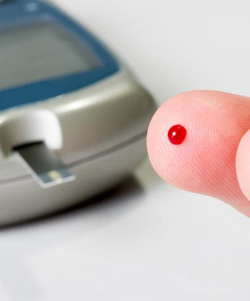
“If we can identify and treat patients earlier, we may be able to help them to avoid secondary complications. This could ultimately extend a patient’s life,” said Mathieu Latreille, who leads the CSC’s Cellular Identity and Metabolism research group, and who carried out the research in collaboration with scientists at the Swiss Federal Institute of Technology. Latreille presented the results to doctors at Hammersmith Hospital this month.
Doctors currently diagnose type 1 diabetes when patients present with symptoms, such as thirst, weight loss and blurred vision. But the damage begins years earlier when the immune system makes a mistake, and wrongly identifies cells within the pancreas as pathogens. It attacks and destroys the cells, causing the pancreas to lose its ability to produce a hormone, called insulin, which controls the levels of sugar in the blood. Patients can manage their sugar levels with injections of insulin, but may still be at risk of developing complications including blindness, kidney failure and heart disease.
Recent studies have suggested that small messenger molecules, called microRNAs, could help doctors to diagnose the early stages of the condition. MicroRNAs carry snippets of genetic information across cells, and are regularly released into the blood stream. In diabetes, the levels of some of these microRNAs in the circulation changes, and a simple blood test could detect this.
But for a blood test to be useful, it must detect a change that is specific to diabetes. Latreille says, “MicroRNAs can be released from any tissue — the eye, kidney or leg — but these will not tell us anything about the health of the pancreas.”
Until now, scientists have been unable to identify a microRNA that is linked to the pancreas. But Latreille and team have shown that a particular molecule, called microRNA 375, is released by the very cells in the pancreas that produce insulin. These cells normally contain lots of microRNA 375, which helps to control cell growth. In type 1 diabetes it is released into the bloodstream in large quantities as soon as the cells begin to die. Latreille says that this makes it a useful marker that may allow doctors to diagnose and treat early stage diabetes.
The next step will be to see if the researchers can use the marker reliably to predict who will develop diabetes years before it begins, and to understand at what stage treatment might be appropriate. The study done by MRC Clinical Sciences Centre, Faculty of Science, Imperial College London.